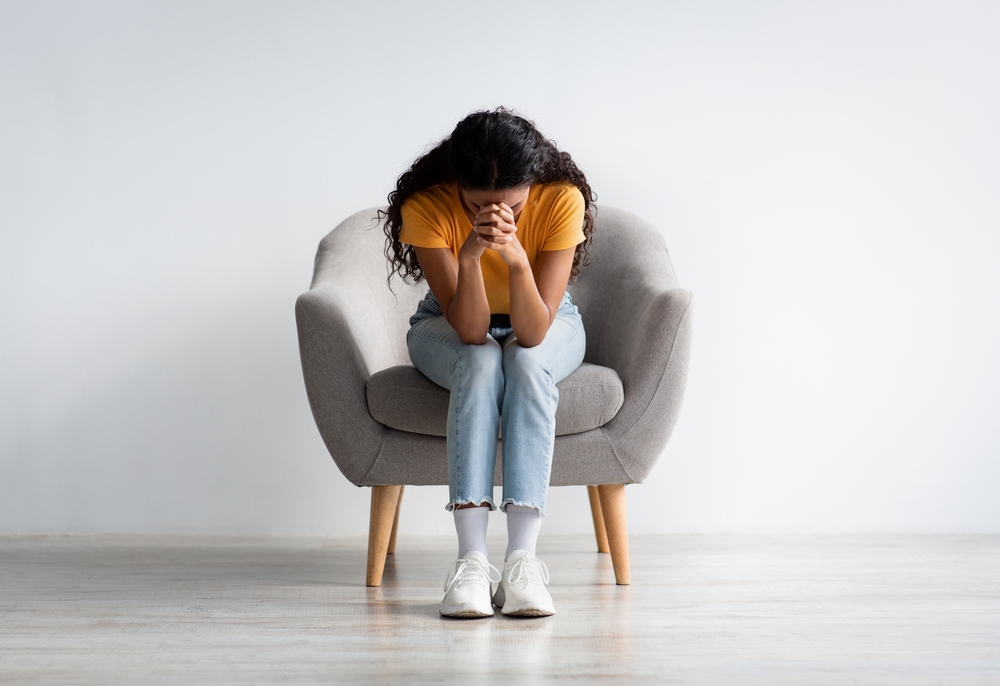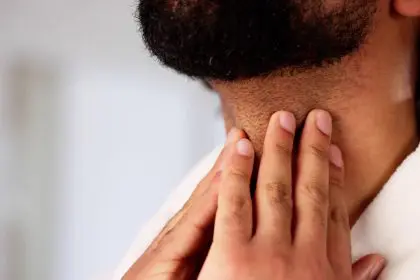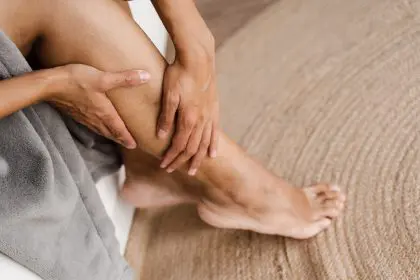You’ve done everything right. Bought the meditation app. Cut back on caffeine. Maybe even started therapy. So why does your anxiety still feel like an unwelcome roommate that refuses to move out? The surprising answer might be hiding in your everyday habits.
The small decisions we make from morning until night can either soothe our nervous systems or secretly throw fuel on our anxiety fire. And here’s the tricky part — many of these anxiety-amplifying habits masquerade as healthy, productive behaviors that society actually rewards us for.
Let’s pull back the curtain on the seemingly innocent daily routines that might be cranking up your anxiety dial without you even realizing it.
The morning phone dive that primes your brain for stress
That reflexive reach for your phone the moment your eyes open might seem harmless. After all, you need to check for important messages and get a handle on your day, right? But this habit essentially tells your brain, “Time to activate fight-or-flight mode before your feet even hit the floor.”
When you immediately expose yourself to emails, news headlines, and social media notifications, you’re flooding your system with potential stressors before giving your mind a chance to find its natural rhythm. This sudden information deluge activates your sympathetic nervous system, essentially pressing the panic button within minutes of waking.
The brain is especially susceptible to stress signals first thing in the morning when cortisol is naturally highest. By adding external stressors during this vulnerable window, you’re potentially setting yourself up for an entire day of heightened anxiety. Those precious first moments after waking represent a neurological clean slate that many of us immediately clutter with digital chaos.
The caffeine-anxiety connection you’re ignoring
Your morning brew might be working against your mental well-being in ways more significant than you realize. Caffeine and anxiety share an uncomfortably close relationship, with the former often intensifying the latter through nearly identical physiological mechanisms.
Caffeine blocks adenosine, the compound that normally makes you feel tired, while stimulating adrenaline production. This creates the classic caffeine effects — heightened alertness and energy. But these same mechanisms also mimic anxiety symptoms like increased heart rate, restlessness, and even the racing thoughts that characterize anxiety disorders.
What makes this connection particularly sneaky is how the effects can hit hours after your morning cup, disconnecting the cause from the effect in your mind. That 2 PM anxiety spike might actually be the delayed response to your 8 AM triple shot, not the work presentation you’re preparing for. Even more troubling, regular caffeine consumption can interfere with sleep quality, creating a vicious cycle where poor sleep increases anxiety sensitivity the following day.
The productivity trap that never lets your mind rest
In our hustle-glorifying culture, the constant need to maximize every minute has become almost a religion. But this perpetual productivity pressure creates the perfect breeding ground for anxiety. When every moment needs to be optimized, your nervous system never receives the signal that it’s safe to relax.
The back-to-back scheduling of Zoom calls without breaks, the habit of multitasking through lunch, and the compulsive email-checking while in line at the store all send a dangerous message to your brain: staying vigilant and ready for the next task is more important than rest. This keeps stress hormones elevated throughout the day.
Even leisure activities often fall victim to productivity pressure. Reading becomes about finishing books rather than enjoying them. Exercise transforms from stress relief into another metric to optimize. Hobbies become side hustles. When every activity serves a purpose beyond simple enjoyment, your mind never experiences the true downtime it needs to regulate anxiety naturally.
The evening scroll that sabotages sleep quality
That seemingly relaxing habit of winding down with social media, news apps, or streaming services creates the perfect storm for sleep disruption and anxiety amplification. The blue light from screens suppresses melatonin production, while the constant stimulation keeps your brain in an alert, processing mode when it should be downshifting toward rest.
The content itself often works against relaxation too. Social comparison triggered by social media activates insecurity. News consumption before bed plants seeds of worry that germinate during the night. Even seemingly innocent entertainment can keep your brain engaged when it needs to be powering down.
This digital bedtime routine creates a double anxiety whammy. First, it directly activates stress responses right before sleep. Then, by reducing both sleep quality and quantity, it leaves you more vulnerable to anxiety the following day. Sleep deprivation amplifies the amygdala’s threat response while dampening the prefrontal cortex’s ability to regulate emotions — essentially turning up your anxiety sensitivity while turning down your coping abilities.
The breathing pattern no one told you about
Most people never think about how they breathe from moment to moment, yet this unconscious pattern might be one of the biggest anxiety culprits hiding in plain sight. Chronic chest breathing — shallow breaths that primarily use the upper chest rather than the diaphragm — directly triggers the body’s stress response.
This breathing pattern, which many of us fall into without realizing it, increases heart rate, restricts oxygen flow, and signals to your nervous system that you’re in danger even when you’re perfectly safe. What makes chest breathing particularly problematic is how it creates a feedback loop with anxiety — stress causes shallow breathing, which creates more physical stress signals, which intensifies the anxiety response.
The normalization of this dysfunctional breathing pattern happens gradually throughout our lives. Desk work encourages slumped postures that restrict diaphragm movement. Fashion favors tight waistbands that discourage belly expansion during breathing. Even the social pressure to maintain a flat stomach can unconsciously train people to hold tension in their abdomens, preventing full diaphragmatic breaths.
The “healthy” eating schedule that destabilizes your blood sugar
The connection between blood sugar stability and anxiety isn’t making enough headlines. When your blood glucose drops too low or spikes and crashes throughout the day, it creates physiological stress that your brain interprets as anxiety. Unfortunately, many popular eating patterns inadvertently create exactly this problem.
Skipping breakfast to practice intermittent fasting might be trendy, but the resulting blood sugar drop can trigger cortisol and adrenaline release. Similarly, the common pattern of having a light, carb-heavy lunch followed by afternoon sugar cravings creates the perfect condition for mood destabilization.
Even seemingly healthy choices like fruit-only snacks or salad-only lunches that lack adequate protein and healthy fats can lead to blood sugar fluctuations that feel emotionally like anxiety waves. The physical sensations of low blood sugar — shakiness, racing heart, difficulty concentrating — so closely mimic anxiety symptoms that many people don’t realize their “random” anxiety spikes actually align perfectly with their eating schedule.
The perfectionistic self-talk that never gives you peace
Perhaps the most powerful yet invisible routine affecting anxiety levels is your habitual internal dialogue. That running commentary in your head about what you should be doing better, what might go wrong, or how you compare to others creates a background radiation of stress that your nervous system absorbs continuously.
This negative self-talk routine often operates on autopilot, with critical thoughts arising so automatically that they seem like objective truth rather than anxiety-producing interpretations. The morning mental rehearsal of all the ways you might fail today, the midday self-criticism about your productivity, and the evening inventory of everything left undone create a perfect environment for anxiety to flourish.
What makes this habit particularly insidious is how it disguises itself as responsibility, ambition, or high standards. Society often rewards perfectionism while ignoring its substantial psychological costs. Breaking free requires recognizing that constant self-criticism isn’t the necessary driver of success you might have been led to believe it is.
Small daily habits create powerful cumulative effects on our mental health. By bringing awareness to these anxiety-amplifying routines, you gain the power to adjust them intentionally. Even modest changes to your morning phone habits, caffeine consumption, breathing patterns, and other daily behaviors can substantially reduce your baseline anxiety level.
The good news? You don’t need to overhaul your entire life at once. Start with the routine that resonates most strongly as a potential anxiety trigger for you. Small, consistent adjustments often yield more sustainable results than dramatic life overhauls that prove impossible to maintain.
Your daily routine shapes your nervous system’s expectations about the world. When you design that routine to signal safety rather than constant threat, anxiety loses much of its power over your life. The path to calmer days might be simpler than you think.
















